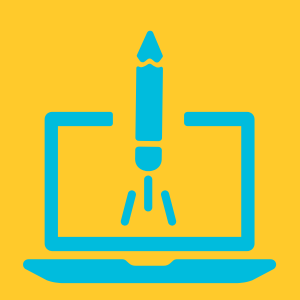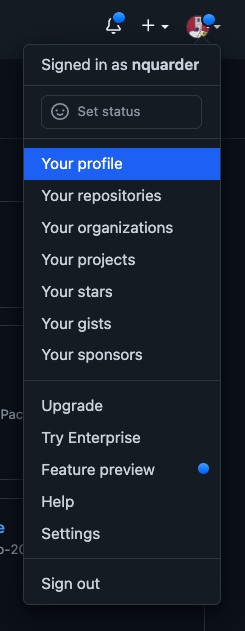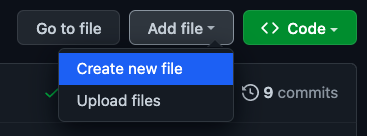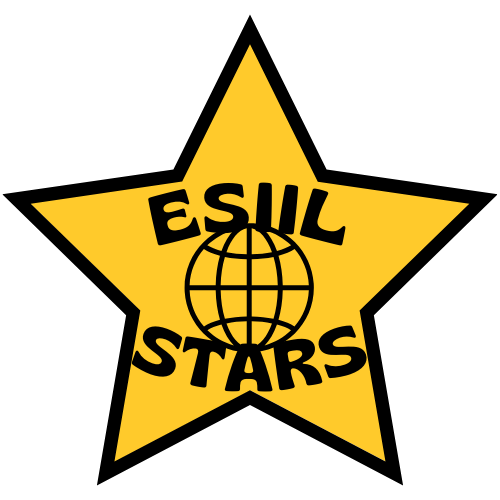Create your own portfolio webpage
Document and share your work
Show potential employers and collaborators what you can do, and share your work! In this activity, you will create a personal portfolio webpage. You’ll use this webpage to share some biographical information and a photo of yourself. You can then update your webpage with links to work that you complete.
- Sign up for a GitHub account, if needed
- Create a GitHub repository
- Publish a website using GitHub pages
- Structure text and other content with Markdown

GitHub is a powerful software development tool owned and operated by Microsoft. It is used almost universally for software development and scientific projects. It lets you:
* Keep track of all the changes you have ever made, when, and why
* Collaborate with others
* Get your code online so you can access it anywhere
* Use a cloud platform to run your code
* Publish a website in minutesWe’ll be focusing on that last feature in this activity, in which you will create and publish your own online portfolio website. Read more about git and GitHub in our open Earth Data Science textbook pages.
Step 0: Create a GitHub account
Use this link to create a free GitHub account.
If you already have a GitHub account, there is no need to create a new account!
Step 1: Create a repository
Once you have a GitHub account, get started by creating a new repository for your webpage. There are several ways to accomplish this task.
Sometimes buttons on GitHub are blue instead of green.
A GitHub repository is a collection of code, documentation, and configuration files. All changes you make in a repository will be tracked using the version control system git. You can discuss and manage your project’s work within the repository.
To do this you can:
Navigate to your profile page
Click on the dropdown arrow next to your profile photo in the upper right corner
Select
Your profile
Select Your profileSelect the Repositories tab from the menu near the top of the page.

Select the Repositories tab from the menu near the top of the page. From here, you can select the green New button on the right to get started.

Select the green New button on the right to get started Customize the settings:
- Give your repository a short and descriptive name. We recommend
<yourusername>.github.iobecause it results in the simplest url for your website. - Give your repository a description
- Make your repository Public
- You can skip adding the gitignore file for now
- Add a README so your repository home page (on GitHub, NOT your published website) will include your title and description
- Choose a License for your repository. Check out choosealicense.com for more information about popular options.
- Give your repository a short and descriptive name. We recommend
Once you’re done, select the green Create Repository button at the bottom of the page
When reading code snippets, the < and > symbols are usually used to surround text you should replace. Do not leave the < and > symbols in place!. For example, in this case your repository name would be jdoe.github.io, if jdoe was your GitHub username. There’s a BIG exception to this rule when it comes to building websites – < and > are key characters if you are using HTML. Read more about HTML.
A license, copyright, and data rights or data sovereignty are all slightly different. A license is about whether and how someone else can use the code in your repository. Copyright is about the text published on your website, and data rights are about whether and how others can use your data
Step 2: Create a new index.md file
You will create a new file called index.md that will serve as the content for your webpage. To do this you can :
Select the Add file button from the menu on the right
Select Create new file.

Select Create new file. Name your new Markdown file
index.md. This will make it the home page of your website. Then, add a Markdown header text to your index file, e.g.
# A fabulous Earth Data Science PortfolioYou can change this text to your name or something else. This is your website, and you’ll always be able to come back and make edits!
Step 3: Commit changes
Now that you’ve created your index.md file and added some text, you’ll want to commit changes to your repository. Add an optional extended description of your changes and then select the green Commit changes button at the bottom of the page.

Step 4: Build your webpage
Once you’ve created your index.md file you’re ready to build your webpage:
From your repository, select the Settings tab from the right end of the menu.

Navigate to your repository settings From here, scroll down the menu on the left and select Pages.

Select the Pages settings tab Now you’ll want to select the main option under the Branch heading and then select Save.

Select the main branch in your repository
Step 5: Check on your webpage
Check in on your webpage to see how it is doing by opening the link https://username.github.io/ in a new tab in your web browser. Here, you’ll need to replace username with your GitHub username. Once you see your name (or whatever text you added to your index.md file in Step 2) appear as a Markdown header, then you know your webpage is working!
Sometimes your webpage can take a minute or so to build so be patient and refresh every 30 seconds or so until the page is done building. You can track the progress in the Actions tab.
Step 6: Start adding information to your webpage
Review the **Markdown Basic Syntax guide to help you format your webpage using Markdown and HTML. We also have a lesson in our Earth Data Science textbook that may be helpful.
Now you’re ready to start adding some more information to your webpage. Navigate back to your repository and open the index.md file that you just created. You will edit this page by clicking on the pencil icon on the right of the menu near the top of your repository page on GitHub. You will use Markdown and Hypertext Markup Language (HTML) to add text, links, images, and other content to your webpage. Markdown and HTML are both common markup langauges, and have wide application including formatting text, report writing, and website development.

Here you should think about adding the following information to your webpage:
- Your name (as a header) if you haven’t already
- A bulleted list of links to your public contact information (email, GitHub account, LinkedIn account, social media accounts, etc.)
- Your educational and professional background
- A biographical paragraph about yourself
- What you’re excited about learning about Earth Data Science
- Questions that you’d like to answer using Earth Data Science
You should also plan to add a photo of yourself and/or where you live. We’ll go over how to add and customize images on your page in the next two lessons.
Always remember to commit changes so that your updated content gets added to your webpage.
